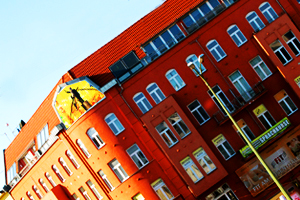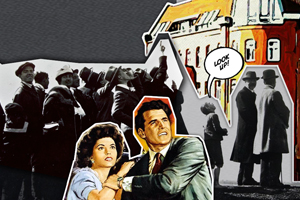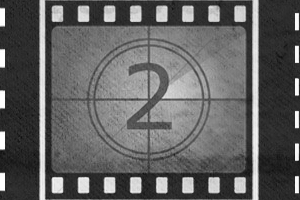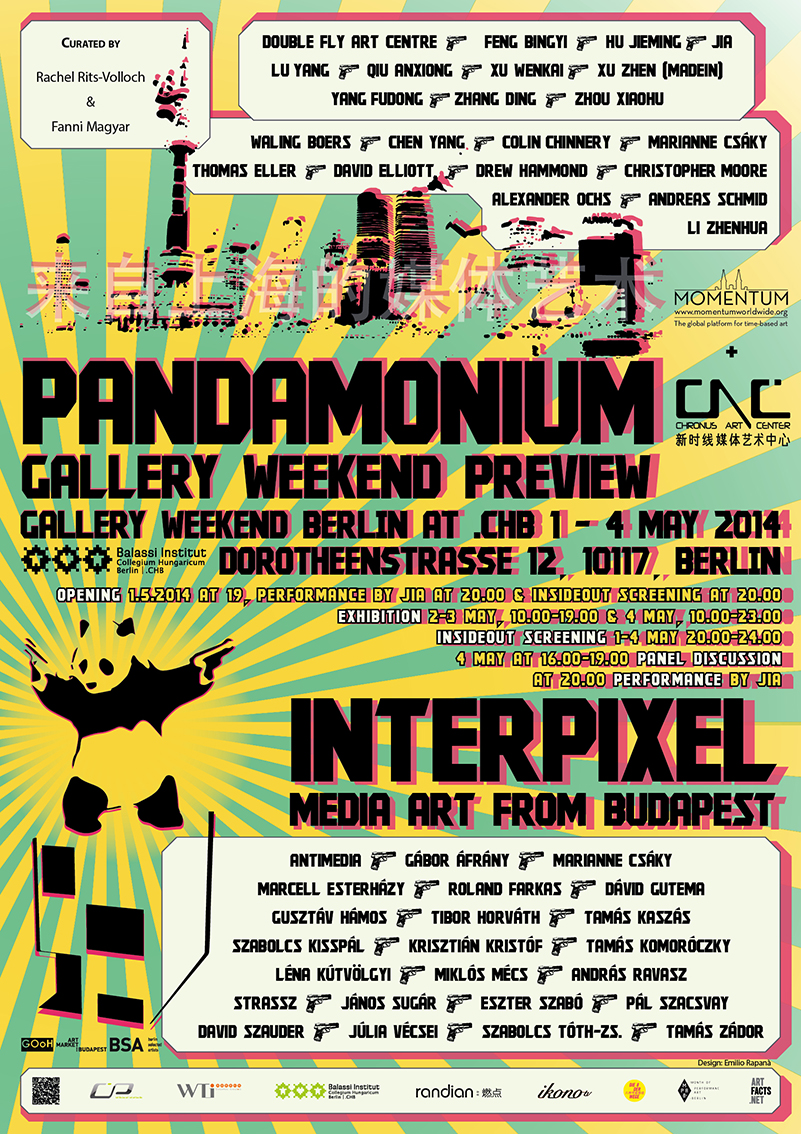
PANDAMONIUM_InsideOut:
QIU ANXIONG – Flying South (2006-09)
YANG FUDONG – City Light (2000)
ZHANG DING – Buddha Jumps Over the Wall (2012)
INTERPIXEL InsideOut:
MARIANNE CSÁKY − Delete (2010)
MARCELL ESTERHÁZY − h.l.m. v2.0 (2005)
TAMÁS KOMORÓCZKY − Absolute-absurd (2012)
ANDRÁS RAVASZ − Ball (2005)
JÁNOS SUGÁR − Typewriter of the Illiterate (2001)
DÁVID SZAUDER − Acceptance (2012)
TAMÁS ZÁDOR − Gangsta’Tripin’ (2005)
CLICK HERE TO READ THE DOSSIER FOR INTERPIXEL
With such a strong focus in Berlin at the moment on contemporary art from China, the aim of this panel is to bring together the curators of the concurrent exhibitions – PANDAMONIUM, and Die 8 der Wege 八种可能路径 The 8 of Paths – together with artists, writers and art historians, for an open discussion of what’s happening now in the art scene in China and why bring it to Berlin. The Panel is followed by a Performance, by Jia, ‘Untitled’, at 7:00 pm and a screening on the Facade of the .CHB from 8:30.
ARTISTS & WORKS
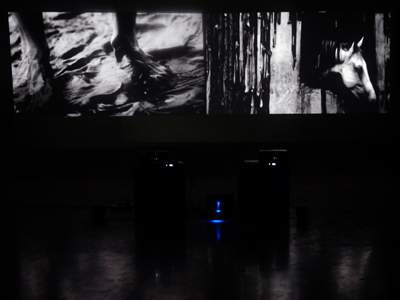
FENG BINGIY
Feng Bingyi (b. 1991) is a young rising star in the Chinese art scene. Having studied under Yang Fudong at the China Academy of Fine Arts, she follows in his footsteps with her focus on cinematic traditions, while working with installation, photography, documentary, and animation. She is exhibited in China alongside superstars of contemporary art, but has never been shown in Berlin. Feng Bingyi is one of the artists undertaking the PANDAMONIUM Artist Residency in Berlin.
The Undertow, 2012
In this black and white split-screen video, the earthiness from the movement of mud as bare feet tamper at it and of the texture of a horse’s pelt as it breathes, contrasts with the digitized sound-samples that are laid over the thick blacks and greys of the imagery. In Feng’s reposed, poetic style, The Undertow creates a liminal, ambiguous space, which the viewer is impelled to fill in.
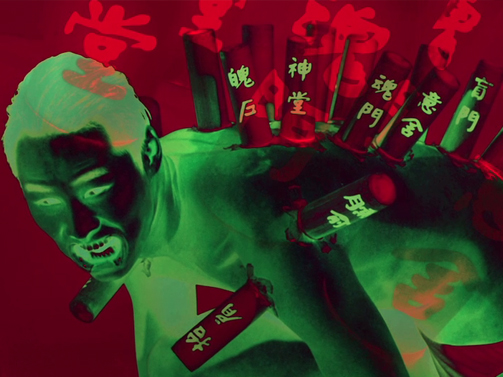
LU YANG
Lu Yang (b. 1984) holds undergraduate and master’s degrees from the New Media Department of the China Academy of Fine Arts, having studied under Zhang Peili. Using 3D animation, video projections, detailed schematics, medical diagrams, supporting text, and music, she has created a brand of BioArt that explores the darker implications of modern science and technology to comment on issues of control in modern society.
The Beast: Tribute to Neon Genesis Evengelion (2012)
Lu Yang’s focus on issues of control leads her to delve into the conundrum whereby human beings cannot escape their physiological realities, yet they use their bodies to create external devices that enable them to break free from their limitations, while at the same time being subject to the controlled of their physical form or illnesses. The Beast is based on the infamous Japanese Manga, Neon Genesis Evangelion. With costumes by Givenchy and music by the New York-based composer and performance artist Du Yun.
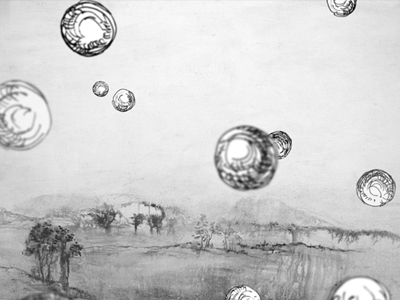
QIU ANXIONG
Qiu Anxiong (b. 1972) also co-mingles the classical and contemporary in his animated films, using the traditional Chinese ink-and-wash style to transpose contemporary social and environmental issues onto traditional Chinese landscapes. Qiu Anxiong is a friend of and neighbor of Yang Fudong and had exhibited internationally, having studied for 6 years at the Kunsthochschule in Kassel. He will be one of the artists undertaking the PANDAMONIUM Residency and will be producing new work for this show.
Flying South, 2006
After working predominantly in oil painting during his studies in Kassel and having later turned to landscape painting in the tradition of the old Chinese masters, Qiu’s return to Shanghai in 2004 marked a shift in interest towards video art. In Flying South (2006), humanity struggles to create its own artificial systems of self-control, proving absurdly counterpro ductile. Using allegorical imagery to explore the impact of environmental degradation and social change, Qiu offers an exquisitely crafted contemplation on the past, the present, and the relation ship between the two.
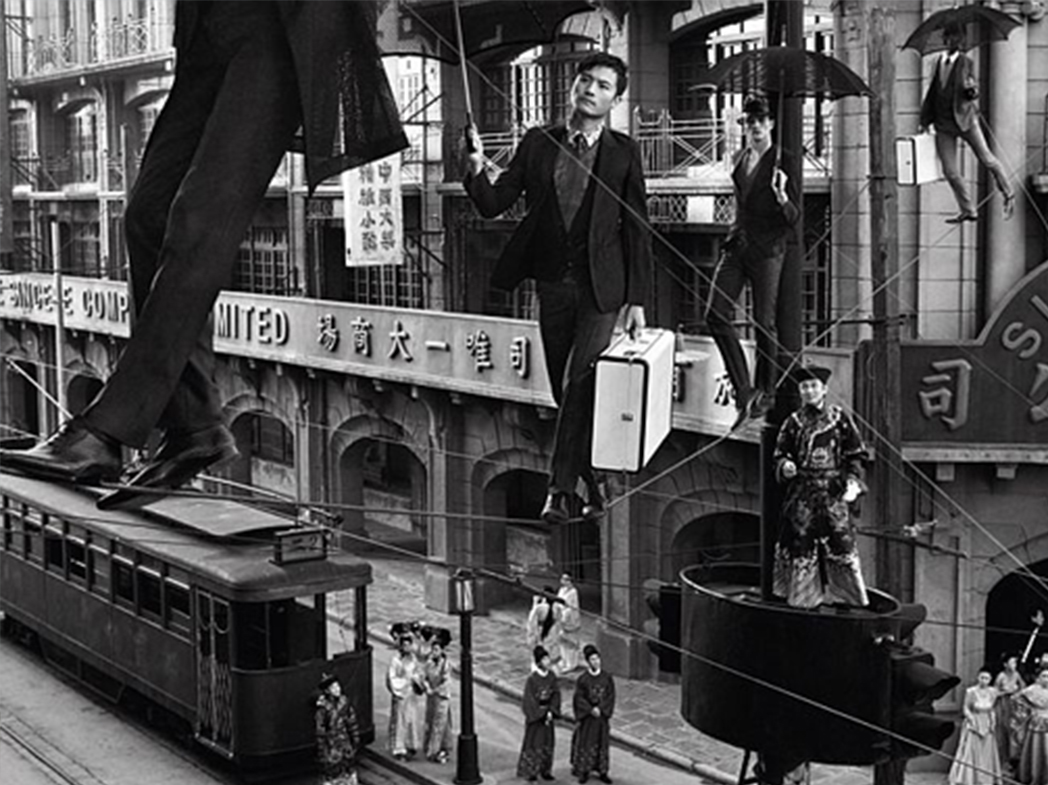
YANG FUDONG
Yang Fudong (b. 1971) is one of China’s best known artists working in film and photography. Having graduated in painting from the China Academy of Fine Arts, since the early 1990s, Yang Fudong has been working with 35mm film, transferred to digital media. Famous for works such series of works as Seven Intellectuals In A Bamboo Forest at the 52nd Venice Biennale, Yang Fudong has exhibited widely internationally. PANDAMONIUM presents the gallery premier of his most recent work.
City Light, 2000
Yang regularly makes use of traditional film genres and City Light is no exception. In a style that references detective- and slapstick-movies, a young, well-dressed office clerk and his doppelgänger move in unison along the street and around the office. Like pre-programmed robots they fit perfectly into their apparently ideally organised environment. The day is entirely dominated by work, but the evening provides space for dreams and creative thinking, causing a schizophrenic situation to arise. In their heroic conduct the two gentlemen sometimes develop into two gangsters who engage in a form of shadowboxing.
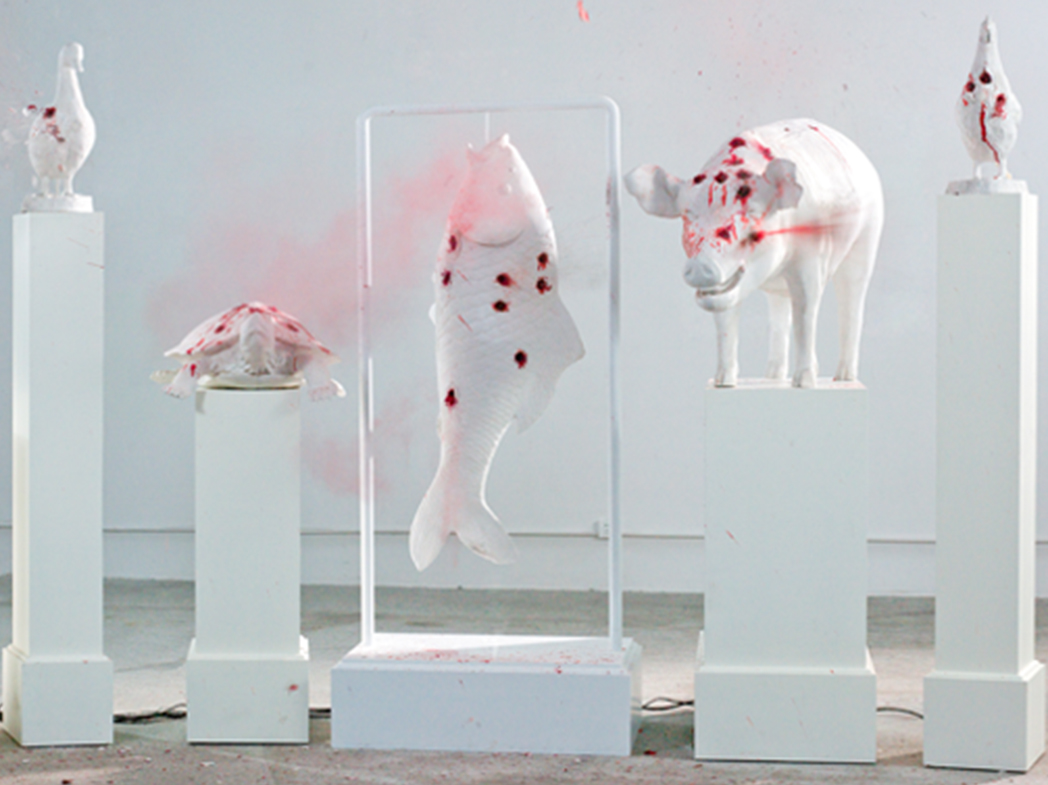
ZHANG DING
Zhang Ding (b. 1980) is a rising star of Chinese multimedia art. Having studied under Zhang Peili, Zhang Ding works with large-scale mixed-media installations, incorporating video and interactive components. Zhang explores ethnic tensions, the plight of migrant workers, and the marginal urban culture that lurk in the recesses of Chinese society. He has exhibited internationally at major institutions, but never before in Berlin.
Buddha Jumps Over the Wall, 2012
The culinary dish called Buddha Jumps over the Wall – a variety of shark fin soup – is regarded as a Chinese delicacy and so much so that it is said to even entice the vegetarian monks from their temples to partake in the meat-based dish, hence its name. In allusion to this dish, Zhang’s video features a group of animal plas ter-sculptures that are individually shot at and finally exploded altogether, to shatter into pieces. Accompanied by a magnificent and solemn symphony and filmed by means of a high-speed camera lens that captures every detail, we see bloodlike liquid and shards of debris flying everywhere in a shocking and cruel, though undeniably aesthetic manner.


 Back to Homepage
Back to Homepage